Fortress Dinaburg
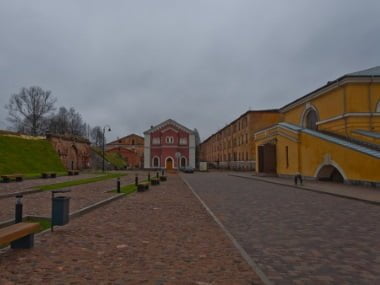 The fortress of Dinaburg in Daugavpils is considered one of the main symbols of the city. It is a pearl and the most significant cultural and historical monument of the second largest city of Daugavpils in Latvia. This is the only fortress of the first half of the 19th century that has survived without significant changes in the Baltics – a vivid evidence of the military history of tsarist Russia. The ensemble of the fortress forms the main fortress (citadel) and a rampart, 8 bastions (pentagonal, extended forward fortifications in the corners of the fortress), ravelins (three angular fortifications in front of the rampart between the bastions), an external protective rampart along which there is a road on the right bank of the Daugava, and some bridge fortifications on the left bank of the river. The territory of the fortress is oval and divided into quarters. In their center is a square front square. Around the square are the quarters of administrative and residential buildings. Facades of buildings are designed in the style of Russian Empire.
The fortress of Dinaburg in Daugavpils is considered one of the main symbols of the city. It is a pearl and the most significant cultural and historical monument of the second largest city of Daugavpils in Latvia. This is the only fortress of the first half of the 19th century that has survived without significant changes in the Baltics – a vivid evidence of the military history of tsarist Russia. The ensemble of the fortress forms the main fortress (citadel) and a rampart, 8 bastions (pentagonal, extended forward fortifications in the corners of the fortress), ravelins (three angular fortifications in front of the rampart between the bastions), an external protective rampart along which there is a road on the right bank of the Daugava, and some bridge fortifications on the left bank of the river. The territory of the fortress is oval and divided into quarters. In their center is a square front square. Around the square are the quarters of administrative and residential buildings. Facades of buildings are designed in the style of Russian Empire.
Despite all its apparent youth, the history of the fortress is not at all so simple. For many centuries, the territory of modern Latvia has been the scene of wars between Germans, Swedes, Poles and Russians for dominance in the Baltic states. In the middle of the XIII century, the German crusaders (swordsmen) in order to keep the local Latgalian population in obedience and oppose the Russian princes decided to create strongholds. One of these points was to be the Dinaburg castle, named after the river – Dina (In it, in ancient times, the path “from the Varangians to the Greeks”). The place was chosen by knights on the bank of the Daugava, where the village of Nauene is now located, which is 19 km higher than the Daugava from the present Daugavpils. Here trade routes passed from Pskov and Novgorod to Vilno, and from Polotsk to Riga and the Baltic.
During the Livonian War, August 11, 1577, the troops of Ivan the Terrible occupied the castle of Dinaburg, but were soon forced to return it to the Poles. The Russians did not continue the struggle for the old, dilapidated castle, and 19 kilometers downstream of the Daugava, at the mouth of the Shunitsa river, they began the construction of a new fortress – the so-called Ivan the Terrible trench. Russia lost in the war with Poland, and according to an agreement concluded in January 1582, the entire territory of Latgale went to Poland. The Poles at the site of the trench of Ivan the Terrible began the construction of a more powerful fortress. It was surrounded by earthen ramparts on which bastions were built. During the Polish-Swedish war, in 1625 and 1635, the city and the fortress were badly damaged by Swedish troops. After the war, the fortress was restored. Developing gradually, Dinaburg, built on a new site, began to compete with other cities in matters of trade. However, the ongoing hostilities hindered the further development of the city. In 1655, the Swedes again seized the Dinaburg fortress from weakening Poland, but they prevented the Russians from conquering Latvia. In the discharge books of that time it was stated: “… you can’t pass the city past on the plows, because there are trenches from the city and opposite the city on the bank of the Dvina, and they shot continuously from the squeak from the one and a half squeaks.”
For this reason, Russia started a war with Sweden, and on July 30, 1656 Tsar Alexei Mikhailovich with the army, consisting of Tatars, Chuvashs and noble cavalry, after three bloody assaults drove the Swedes out of the Dinaburg fortress. In 1667, in Andrusovo, a peace treaty was signed between Russia and Sweden, according to which Russia renounced all the conquests in Latgale, and the city was returned to Poland. In February 1700, the Great Northern War began. The fortress is occupied by Saxon troops – allies of Russia. In 1710, a plague raged on the territory of Latgale. The Dinaburg garrison was almost extinct, the fortress was disarmed, the guns were transported to Vilna. In 1772, according to the first partition of Poland, Latgale was annexed to the Russian Empire. In 1810, the place of future construction and the plan of the fortress were determined. The construction of a powerful structure involved 15,000 people.
In 1812, after bloody battles, the French army occupied unfinished buildings for 5 months. Then construction continued, and in 1833, Emperor Nicholas II consecrated the fortress. The year of birth is considered to be 1878, when construction work was completed. Unfortunately, having quickly lost its military significance, the fortress of Dinaburg was already turned into a warehouse in 1897. In the 1920-1940s, the regiments of the Latvian army were stationed here, during the Great Patriotic War the territory was turned by the Nazis into a huge concentration camp Stalag-340, and from 1948 to 1994 the Daugavpils Higher Military Aviation Engineering School was located here, preparing the engineering staff for USSR Air Force and Air Defense. The territory of the fortress was closed, so many local residents knew it only at the weddings of Daugavpils beauties with the military. Since 1998, the fortress was transferred to the State Real Estate Agency. Now restoration work is underway in the fortress and gradually it is being revived now not for military purposes: it is planned to place Mark Rothko’s center in the Arsenal building with an exhibition of original works and residences of artists.


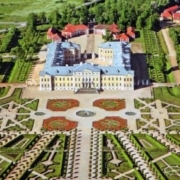
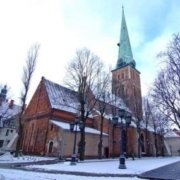

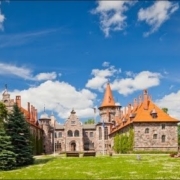



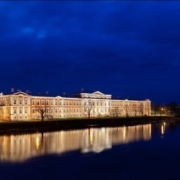


Leave a Reply
Want to join the discussion?Feel free to contribute!